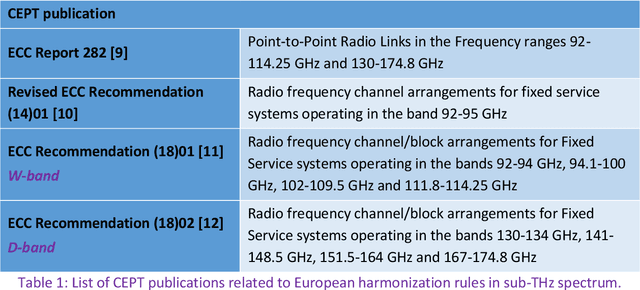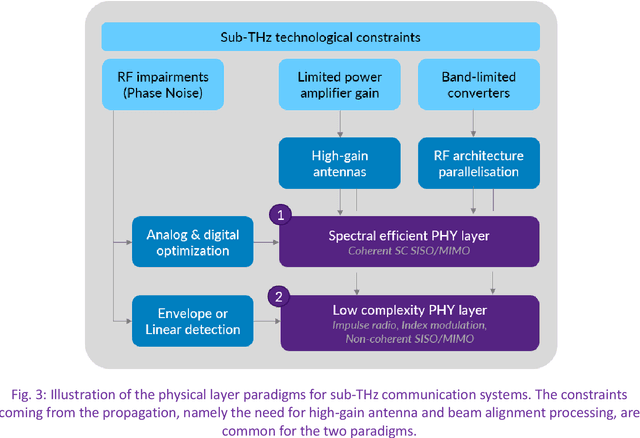Jean-Baptiste Doré
CEA-LETI
Wireless Connectivity in the Sub-THz Spectrum: A Path to 6G
Jan 17, 2022



Abstract:Wireless communication in millimetre wave bands, namely above 20 GHz and up to 300 GHz, is foreseen as a key enabler technology for the next generation of wireless systems. The huge available bandwidth is contemplated to achieve high data-rate wireless communications, and hence, to fulfil the requirements of future wireless networks. In this paper, we discuss and illustrate new paradigms for the sub-THz physical layer, which either aim at maximizing the spectral efficiency, minimizing the device complexity, or finding good tradeoff. The solutions offered by appropriate modulation schemes and multi-antenna systems are assessed based on various potential scenarios.
Toward 6G: From New Hardware Design to Wireless Semantic and Goal-Oriented Communication Paradigms
Jun 25, 2021



Abstract:Several speculative visions are conjecturing on what 6G services will be able to offer at the horizon of 2030. Nevertheless, the 6G design process is at its preliminary stages. The reality today is that hardware, technologies and new materials required to effectively meet the unprecedented performance targets required for future 6G services and network operation, have not been designed, tested or even do not exist yet. Today, a solid vision on the cost-benefit trade-offs of machine learning and artificial intelligence support for 6G network and services operation optimization is missing. This includes the possible support from hardware efficiency, operation effectiveness and, the immeasurable cost due to data acquisition-transfer-processing. The contribution of this paper is three-fold. This is the first paper deriving crucial 6G key performance indicators on hardware and technology design. Second, we present a new hardware technologies design methodology conceived to enable the effective software-hardware components integration required to meet the challenging performance envisioned for future 6G networks. Third, we suggest a paradigm shift towards goal-oriented and semantic communications, in which a totally new opportunity of joint design of hardware, artificial intelligence and effective communication is offered. The proposed vision is consolidated by our recent results on hardware, technology and machine learning performance.
 Add to Chrome
Add to Chrome Add to Firefox
Add to Firefox Add to Edge
Add to Edge